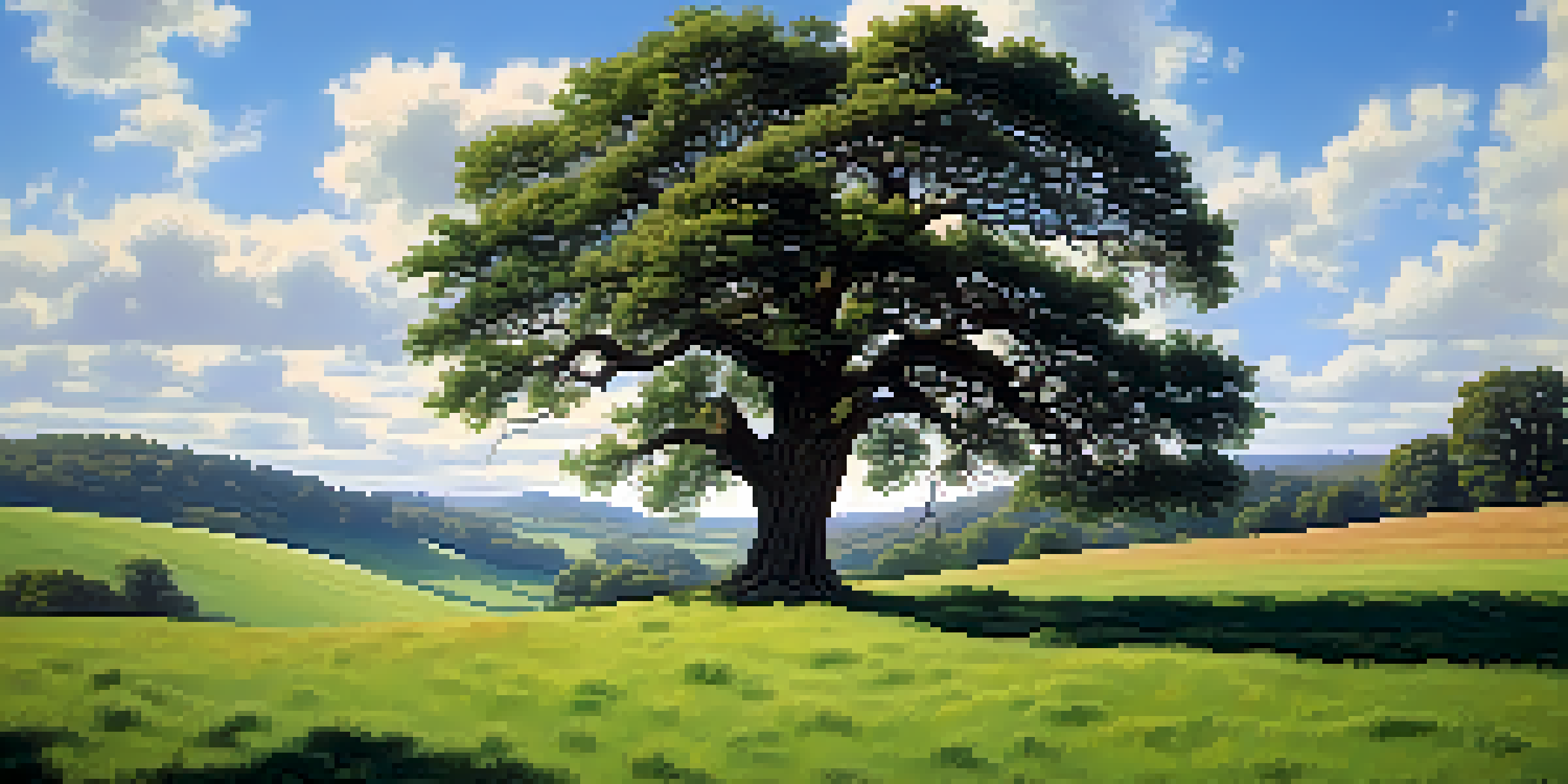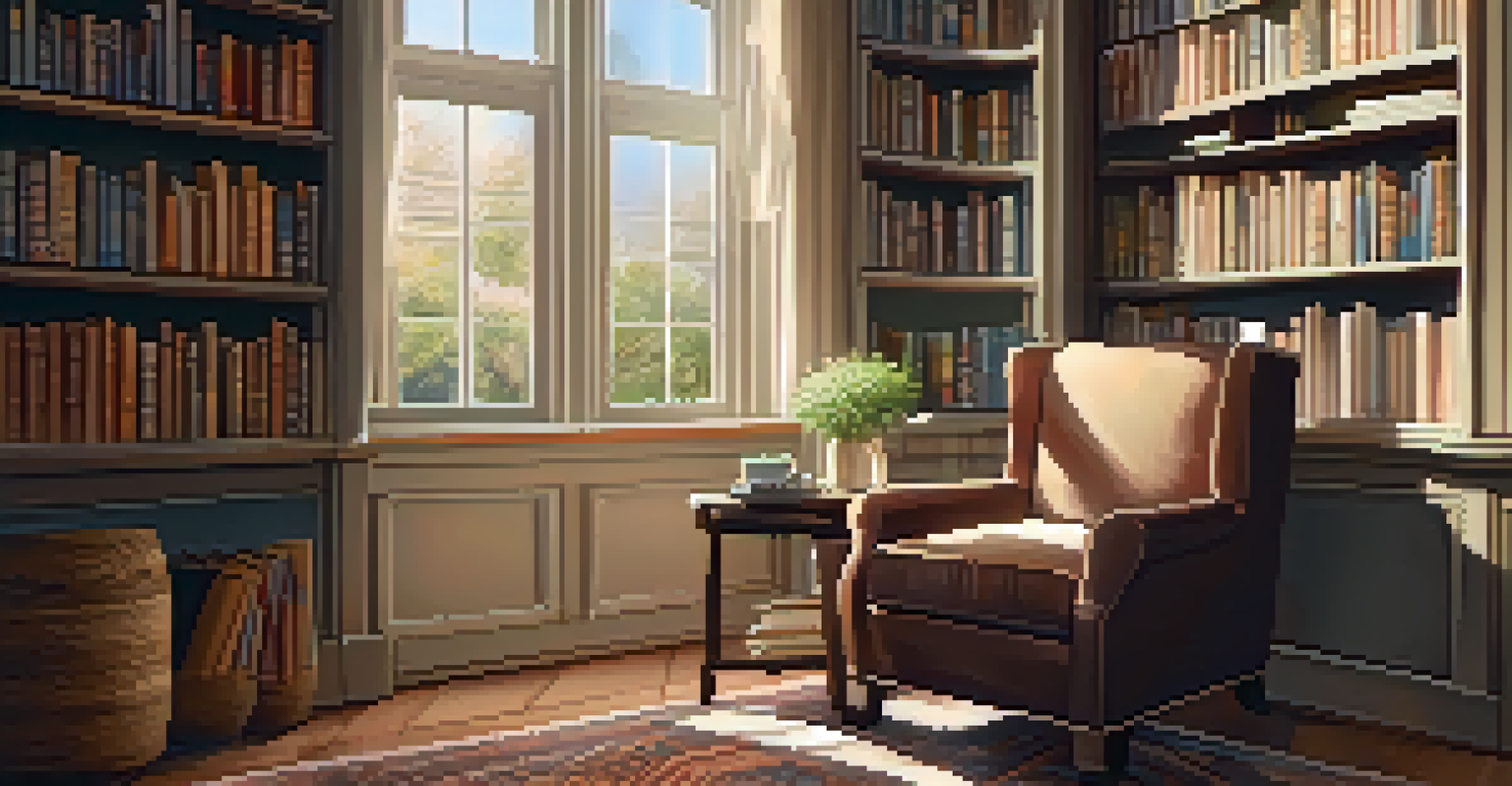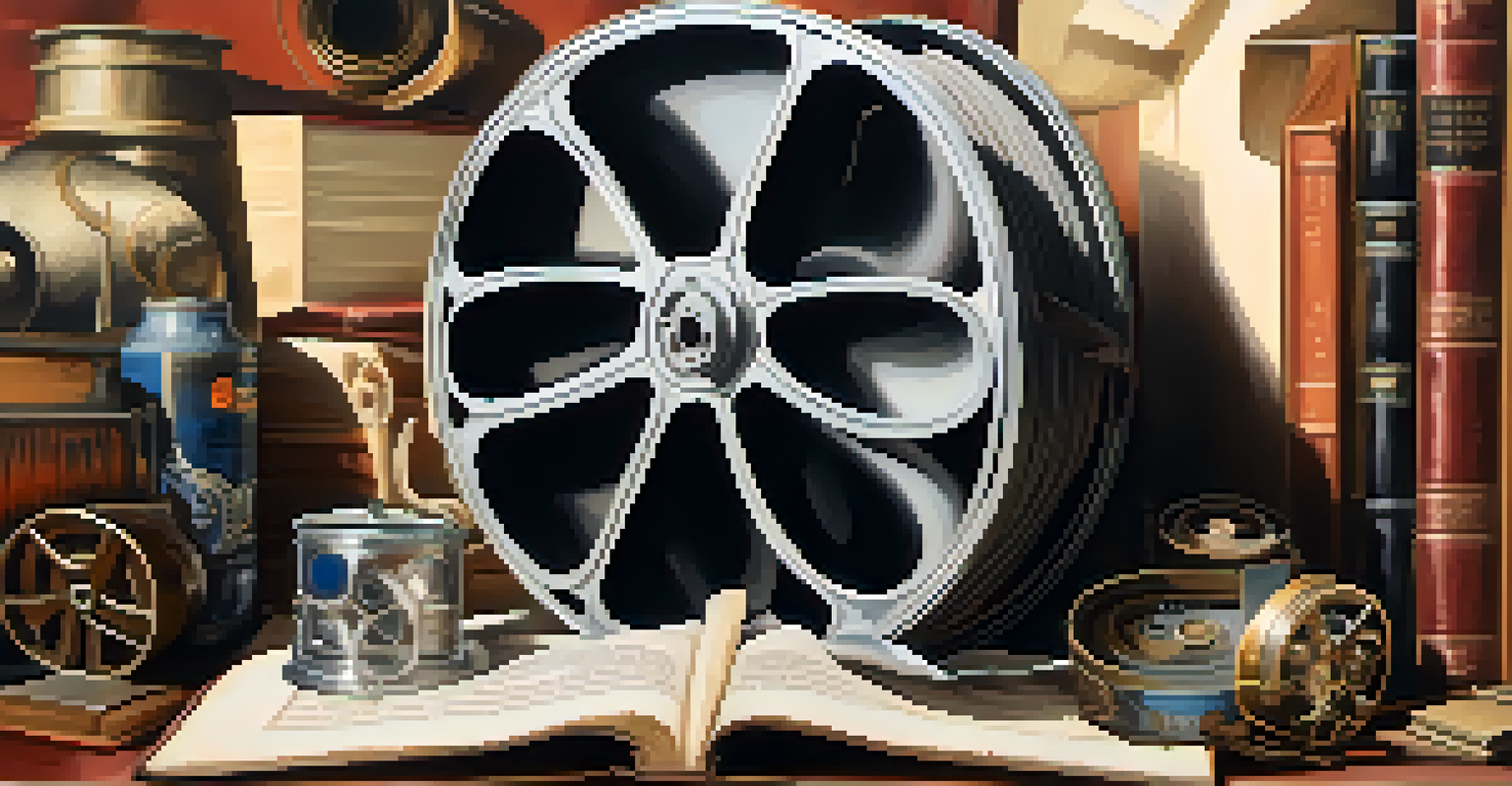How Classic Literature Shapes Modern Film Storytelling Techniques

The Enduring Themes of Classic Literature in Film
Classic literature often delves into universal themes like love, ambition, and morality, which remain relevant in modern storytelling. Films like 'Pride and Prejudice' and 'Moby Dick' showcase how these themes resonate with contemporary audiences, allowing viewers to connect deeply with the characters' struggles. By weaving these timeless themes into their narratives, filmmakers can evoke a sense of familiarity and relatability, drawing inspiration from the rich tapestry of literary tradition.
Books are a uniquely portable magic.
Moreover, the emotional depth found in classic literature provides a robust foundation for character development in film. Take Shakespeare’s plays, for instance; their intricate characters and complex motivations serve as a goldmine for screenwriters. This connection between literature and film not only enriches the viewing experience but also highlights the shared human experience across different eras.
In this way, classic literature acts as a bridge, linking past and present narratives. As filmmakers adapt these well-trodden paths, they breathe new life into age-old stories, allowing audiences to rediscover and appreciate the lessons embedded within. The cycle of inspiration continues, ensuring that classic themes remain vibrant in modern cinema.
Character Archetypes: From Page to Screen
Character archetypes, which are foundational in classic literature, play a significant role in modern film narratives. Think of the tragic hero in Greek tragedies or the archetypal villain in classic novels; these character types provide a framework for storytelling that filmmakers still rely on today. By understanding these archetypes, screenwriters can craft multidimensional characters that resonate with audiences, enhancing the emotional impact of their stories.

For instance, consider the character of Gatsby in 'The Great Gatsby.' His pursuit of the American Dream embodies the archetype of the tragic hero, which has influenced countless modern films. Filmmakers adapt these archetypes to create relatable and compelling characters, often placing them in contemporary settings to explore timeless conflicts.
Timeless Themes in Film Adaptations
Classic literature's universal themes like love and ambition continue to resonate in modern films, enriching storytelling for contemporary audiences.
Furthermore, the use of archetypes helps streamline storytelling, allowing filmmakers to communicate complex ideas quickly. Audiences recognize these familiar character types, making it easier to engage with the narrative. As a result, classic literature continues to shape how characters are portrayed in film, infusing them with depth and meaning.
Narrative Structures Borrowed from Literary Classics
The narrative structures found in classic literature are often mirrored in modern filmmaking. Many films still employ the classic three-act structure, which provides a clear beginning, middle, and end, much like a well-crafted novel. This structure allows filmmakers to build tension and develop plotlines effectively, ensuring that the audience remains captivated throughout the story.
The more that you read, the more things you will know. The more that you learn, the more places you'll go.
Take 'The Odyssey' as an example; its journey format has inspired countless films that follow a hero's quest. This narrative technique not only creates a compelling storyline but also allows for character growth and transformation, which are central to engaging storytelling. By following similar arcs, modern filmmakers tap into a rich tradition of storytelling that resonates with viewers.
Moreover, these familiar structures help audiences navigate complex narratives with ease. By anchoring their stories in established literary frameworks, filmmakers can explore innovative ideas while maintaining coherence. This blending of classic and contemporary storytelling techniques ensures that the essence of literature remains alive in modern cinema.
Symbolism: Connecting Literature and Film
Symbolism plays a crucial role in both classic literature and modern film, providing deeper layers of meaning. Just as authors use symbols to convey themes and ideas, filmmakers employ visual symbols to enhance storytelling. For example, the green light in 'The Great Gatsby' represents Gatsby's unattainable dreams, a powerful image that resonates throughout the film adaptation as well.
By utilizing symbolism, filmmakers can create a richer viewing experience that encourages audiences to think critically about the narrative. This technique allows for interpretations that can vary from person to person, inviting discussions and deeper engagement with the film. As viewers decipher symbols, they become more invested in the story, much like readers of classic literature.
Character Archetypes Shape Narratives
Foundational character archetypes from classic literature provide a framework for modern filmmakers to create relatable and multidimensional characters.
Furthermore, the integration of symbolism in film connects it to the literary world, bridging the gap between two art forms. This not only honors the original work but also challenges filmmakers to innovate within established symbolism. In this way, classic literature continues to inspire visual storytelling in profound ways.
Adaptation: The Lifeblood of Film Storytelling
Adaptations of classic literature into film have become a dominant trend in the industry, showcasing how timeless stories can be reimagined for new audiences. Classics like 'Jane Eyre' and 'To Kill a Mockingbird' have been adapted multiple times, each iteration offering a fresh perspective while staying true to the original themes. These adaptations breathe new life into beloved tales, ensuring their relevance in contemporary culture.
Moreover, adaptations allow filmmakers to explore diverse genres and styles. A classic story can be transformed into a modern thriller or a whimsical animation, creating a unique experience while preserving the core message. This versatility highlights the adaptability of literature and its ability to resonate across different contexts and audiences.
While adaptations can sometimes face criticism for straying from the source material, they also spark conversations about interpretation and artistic license. This dialogue enriches both the literary and cinematic worlds, encouraging audiences to revisit the original works and engage with them in new ways. Ultimately, literature's adaptability continues to shape the landscape of modern film storytelling.
Influence of Literary Techniques on Screenwriting
Screenwriters often draw from literary techniques to enhance their storytelling, creating a more immersive experience for viewers. Techniques such as foreshadowing, flashbacks, and unreliable narrators, commonly found in literature, can be effectively translated onto the screen. For example, nonlinear narratives in films like 'Pulp Fiction' echo the complexities of literary storytelling, challenging viewers to piece together the plot.
Literary techniques also contribute to the emotional depth of film. By employing devices like stream-of-consciousness or vivid imagery, screenwriters can create a more profound connection between characters and audiences. This emotional resonance is what keeps viewers engaged and invested in the story, akin to the experience of reading a novel.
Literary Techniques Enhance Screenwriting
Screenwriters utilize literary techniques such as foreshadowing and flashbacks to deepen emotional connections and engage viewers in film narratives.
Furthermore, the blending of literary techniques with cinematic elements creates a unique art form. Directors and cinematographers can enhance these techniques visually, adding layers of meaning through imagery and sound. This collaboration between literature and film not only enriches the storytelling process but also demonstrates the enduring influence of classic literature on modern cinema.
The Legacy of Classic Literature in Today's Cinema
The legacy of classic literature is palpable in today's cinema, influencing filmmakers across genres and styles. Many contemporary filmmakers openly cite literary classics as their inspiration, using them as a foundation to explore modern themes and issues. This connection underscores the timeless nature of great storytelling, proving that the core elements of a good story transcend time.
Additionally, the resurgence of interest in classic literature through film adaptations has sparked a renewed appreciation for these works. Audiences are often inspired to read the original texts, fostering a deeper understanding of the stories that shaped the cinematic experiences they enjoy. This cycle of influence ensures that classic literature continues to thrive alongside modern storytelling.

Ultimately, the interplay between classic literature and modern film storytelling serves as a testament to the power of narrative. As filmmakers adapt and reinterpret these stories, they keep the spirit of classic literature alive, ensuring that its lessons and themes continue to resonate with new generations. This enduring relationship enriches both literature and film, creating a vibrant dialogue that celebrates the art of storytelling.